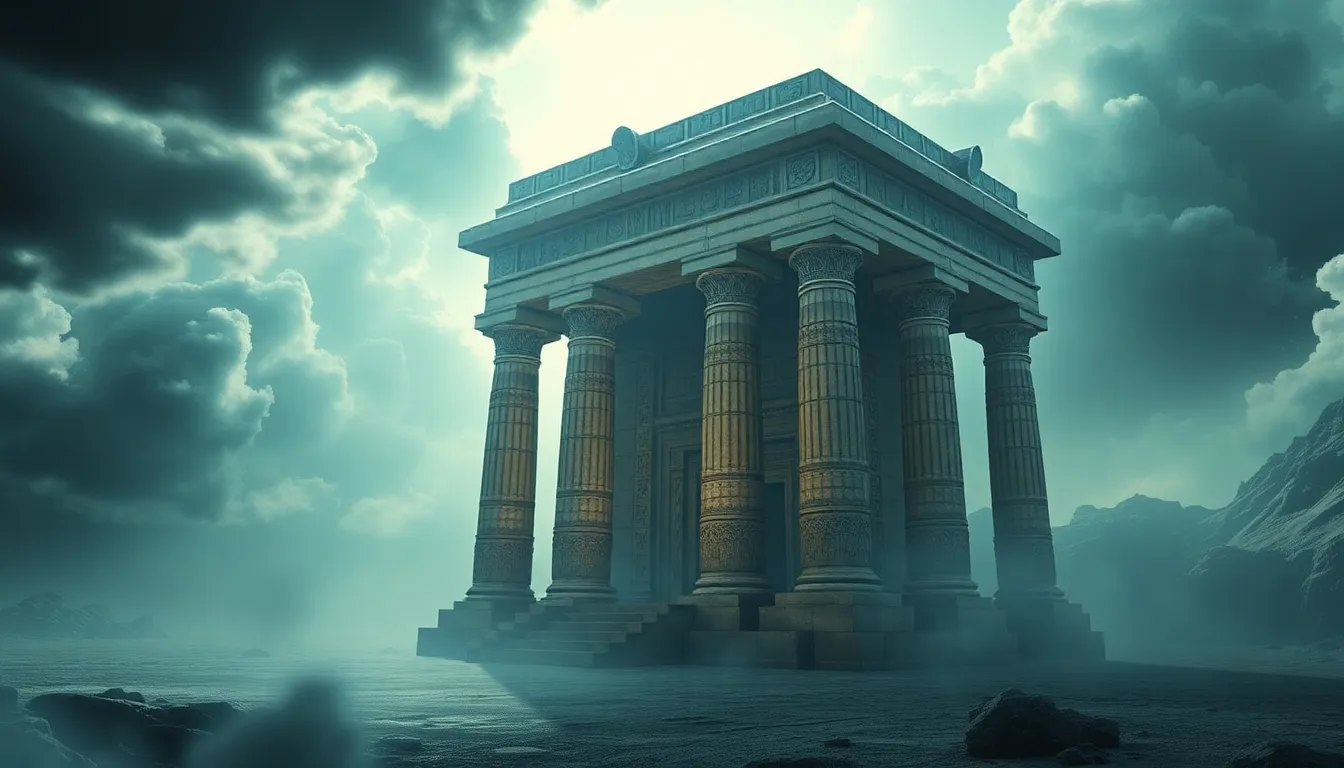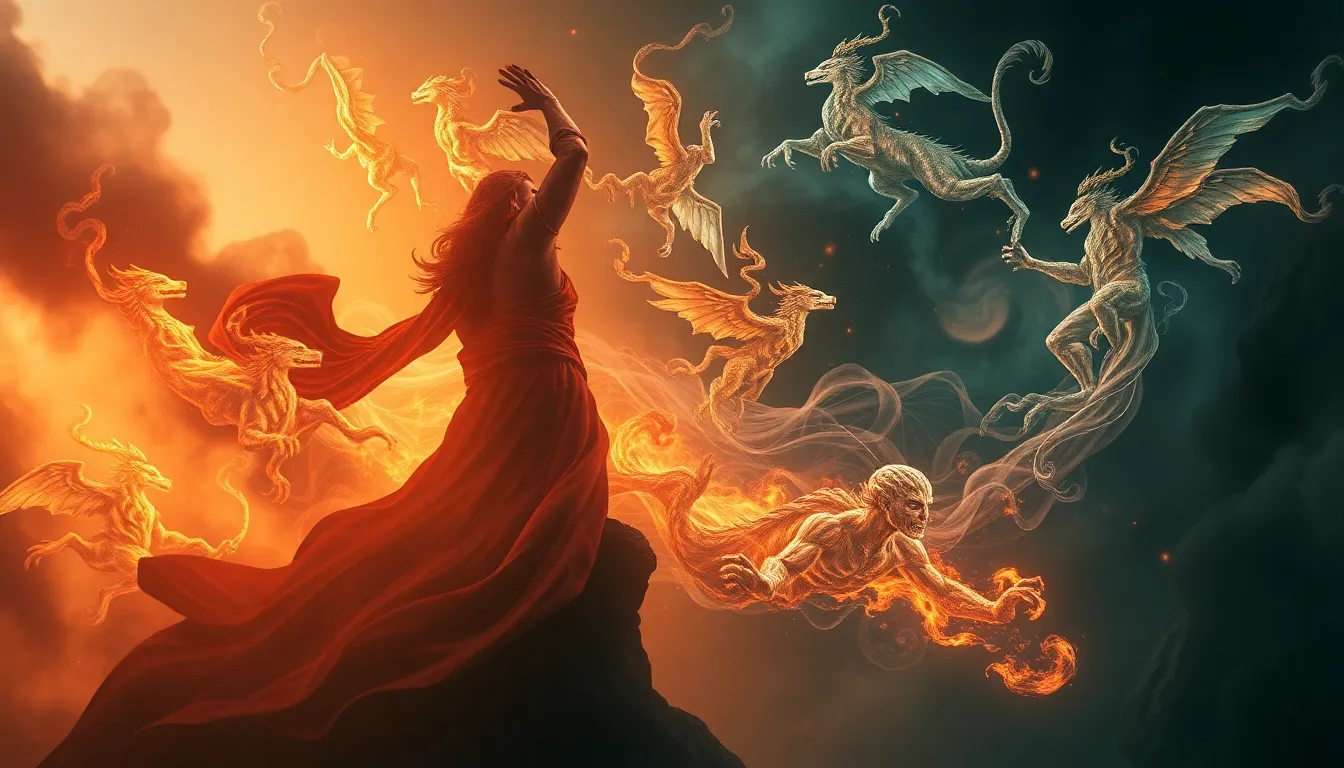The Prophecies of the Ancient Persians: What Lies Ahead?
I. Introduction to Ancient Persian Prophecies
The ancient Persian civilization, known for its rich cultural heritage and profound philosophical insights, has left an indelible mark on the fabric of human history. Spanning several millennia, this civilization has contributed significantly to various fields, including art, science, and religion. Among its many facets, the prophetic traditions of the Persians stand out as a vital aspect of their culture and belief system.
Prophecies in Persian culture were not merely predictions of the future; they served as a guiding force that shaped the moral and ethical frameworks of society. They provided a lens through which the ancient Persians interpreted the world around them and their place within it. This article aims to explore ancient Persian prophecies, their historical context, key texts, themes, and their relevance in today’s world.
II. Historical Context of Persian Prophecies
To understand the nature of Persian prophecies, one must consider the historical and religious backdrop against which these prophecies emerged. Central to this context is Zoroastrianism, one of the world’s oldest monotheistic religions, founded by the prophet Zoroaster (or Zarathustra) in ancient Persia.
Zoroastrianism emphasized the duality of good and evil, encapsulated in the struggle between Ahura Mazda, the supreme god, and Angra Mainyu, the evil spirit. This dualistic worldview profoundly influenced the prophetic traditions, leading to the belief that the cosmos is engaged in a constant battle between these opposing forces.
- Key Historical Figures: Zoroaster, as the founder of Zoroastrianism, is a pivotal figure in Persian prophetic traditions. Other influential figures include later prophets and scholars who interpreted and expanded upon Zoroaster’s teachings.
- Significant Events: Various historical events, such as wars, natural disasters, and political upheavals, prompted the writing of prophetic texts, reflecting the societal need to find meaning and hope in turbulent times.
III. Major Texts and Sources of Persian Prophecies
Several sacred texts form the backbone of Persian prophetic literature, each offering unique insights into the beliefs and predictions of the ancient Persians.
A. The Avesta: Sacred texts and their prophetic content
The Avesta is the primary collection of sacred Zoroastrian texts, containing hymns, rituals, and teachings. Among its components, the Yasna and the Gathas are particularly significant for their prophetic verses, which speak of the coming of a savior figure, known as Saoshyant, who will ultimately triumph over evil.
B. The Bundahishn: Creation myths and future predictions
The Bundahishn, another important Zoroastrian text, provides creation myths and outlines the cyclical nature of time, including predictions about the end of the world and the final battle between good and evil.
C. Historical records and their prophetic interpretations
Ancient Persian historians and scholars often incorporated prophetic elements into their writings, interpreting historical events through the lens of prophecy. Works from figures such as Herodotus, who documented Persian history, also reflected the influence of Persian prophetic thought.
IV. Themes and Motifs in Persian Prophecies
Several recurring themes and motifs can be identified in Persian prophecies, reflecting the cultural and philosophical values of the ancient Persians.
- Duality of Good and Evil: The constant struggle between Ahura Mazda and Angra Mainyu symbolizes the moral choices faced by humanity.
- The Concept of Time and Cyclicality: Persian prophecies often reflect a cyclical understanding of time, where events are destined to repeat in a cosmic rhythm.
- The Role of Kingship and Divine Authority: Prophecies frequently underscore the significance of righteous kingship, suggesting that the fate of the nation is intertwined with the moral character of its leaders.
V. Notable Prophecies and Their Interpretations
Among the myriad prophecies recorded in ancient texts, several notable predictions stand out for their depth and implications.
A. Overview of Key Prophecies and Their Meanings
One of the most significant prophecies is the coming of the Saoshyant, a messianic figure who will bring about a golden age and restore order to the world. This prophecy has been interpreted as a source of hope for the Persian people, symbolizing the ultimate victory of good over evil.
B. Analysis of Specific Predictions Regarding Cosmic Events
Persian prophecies often include predictions of cosmic events, such as the eventual destruction of the world by fire, followed by its renewal. This cyclical destruction and rebirth reflect the Zoroastrian belief in the impermanence of the material world.
C. Prophecies Concerning the Fate of Nations and Empires
Many prophecies also address the fate of nations, warning against moral decay and the consequences of straying from the path of righteousness. These warnings resonate with the historical experiences of the Persian Empire, which faced numerous challenges over the centuries.
VI. The Influence of Persian Prophecies on Other Cultures
The prophetic traditions of the ancient Persians did not exist in isolation; they were influenced by and interacted with neighboring civilizations.
A. Interaction with Neighboring Civilizations (Greeks, Romans, etc.)
Persian prophecies found their way into the cultural exchanges between Persia and civilizations such as Greece and Rome. Greek philosophers like Heraclitus and Plato were influenced by Persian thought, including its notions of duality and cosmic order.
B. Prophetic Elements in Later Religious Texts
Elements of Persian prophecies can be traced in the writings of later religious traditions, including early Christianity and Islam, which adopted and adapted various Zoroastrian concepts.
C. Contemporary Interpretations in Modern Spiritual Movements
Modern spiritual movements, including New Age philosophies, have drawn upon ancient Persian prophecies, interpreting them in ways that resonate with contemporary seekers of wisdom and truth.
VII. The Legacy of Persian Prophecies in Modern Times
As the world has evolved, the ancient prophecies of Persia have continued to resonate, particularly within modern Iranian society.
A. How Ancient Prophecies Are Viewed in Today’s Iran
In contemporary Iran, ancient prophecies are often revisited, with many people seeing them as a source of national identity and cultural pride. They foster a sense of continuity with the past.
B. The Relevance of Persian Prophecies in Modern Geopolitics
Persian prophecies sometimes inform political discourse, as leaders and scholars reference them in discussions about the nation’s future and its place in the world.
C. Popular Culture Representations of Persian Prophecies
In literature, film, and art, Persian prophecies are frequently depicted, showcasing their enduring appeal and the fascination they hold for audiences around the globe.
VIII. Critiques and Controversies Surrounding Persian Prophecies
The study of Persian prophecies is not without its debates and controversies.
A. Debates Among Scholars Regarding Authenticity and Interpretation
Scholars often engage in discussions about the authenticity of certain prophetic texts and their interpretations, leading to various schools of thought within Zoroastrian studies.
B. The Impact of Translation and Transmission on Understanding Prophecies
As with many ancient texts, the translation and transmission of Persian prophecies have raised questions about their accuracy and the potential for misinterpretation over centuries.
C. Misuse of Prophecies in Contemporary Political Contexts
In recent times, some political figures have misappropriated Persian prophecies to justify actions or policies, leading to ethical concerns regarding their use in modern geopolitics.
IX. Future Implications: What Lies Ahead?
The future of human society may still be intertwined with the ancient wisdom encapsulated in Persian prophecies.
A. Speculations About the Relevance of Ancient Prophecies in Predicting Future Events
Many modern thinkers speculate on the relevance of these ancient prophecies in predicting future events, suggesting that they may offer valuable insights into contemporary challenges.
B. The Role of Ancient Wisdom in Contemporary Decision-Making
Understanding these prophecies can guide personal and societal decision-making, encouraging a reflection on moral and ethical values in a rapidly changing world.
C. How Understanding These Prophecies Can Guide Personal and Societal Futures
By engaging with the lessons



